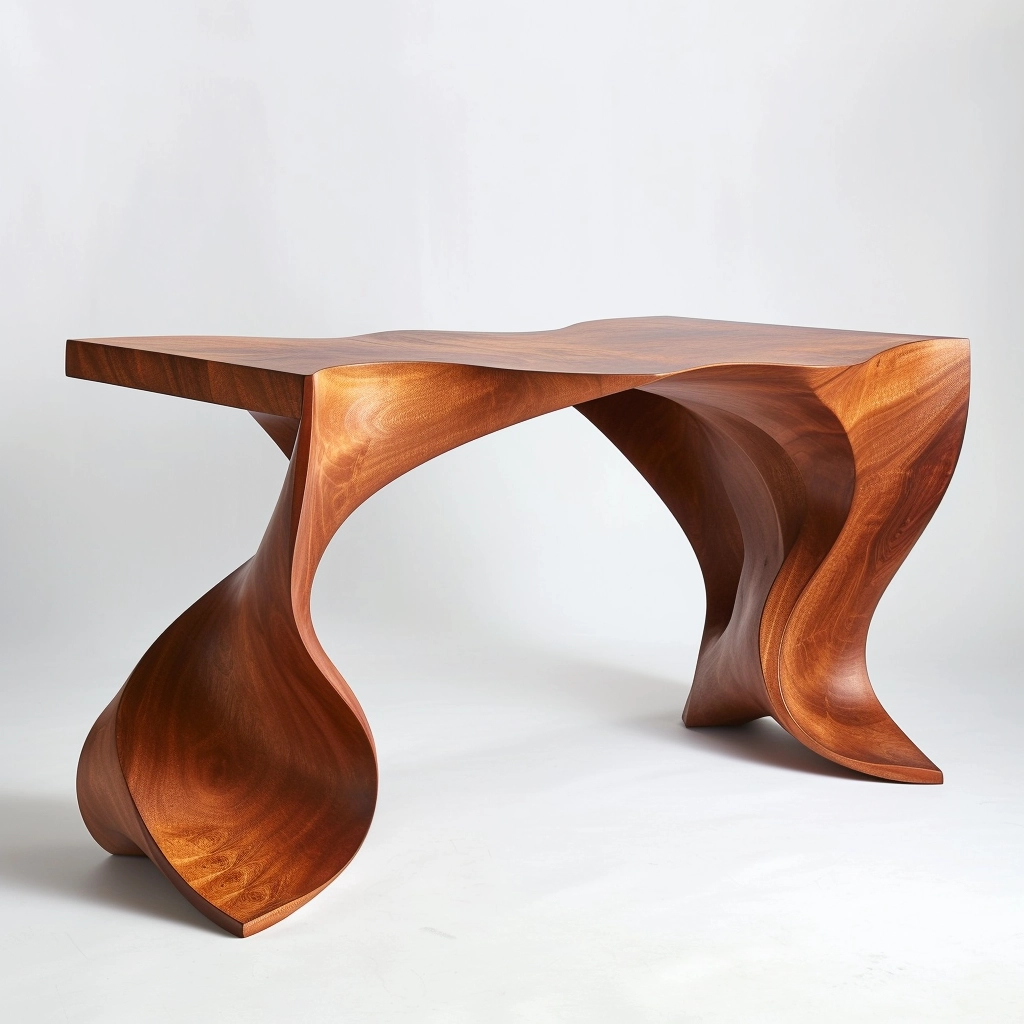Bubinga wood, prized for its stunning grain patterns, rich coloration, and exceptional durability, is a sought-after material in the world of woodworking and interior design. Originating from Africa, particularly the regions of West Africa and Central Africa, Bubinga offers a unique combination of aesthetic appeal and structural integrity that makes it a popular choice for a wide range of applications. Let’s delve into the characteristics, uses, and benefits of this exotic hardwood.
Unveiling the Beauty and Versatility of Bubinga Wood: A Guide to the Exotic Hardwood
Contents

Origin and Characteristics
Bubinga wood, scientifically known as Guibourtia spp., is derived from several species of trees within the Guibourtia genus. These trees are native to the tropical forests of Africa, where they thrive in diverse ecosystems characterized by rich biodiversity and favorable growing conditions. Bubinga wood is renowned for its striking appearance, featuring a range of hues from pinkish-red to reddish-brown, often accompanied by distinctive grain patterns that exhibit swirls, curls, and wavy lines.
Physical Properties
In addition to its visual allure, Bubinga possesses excellent physical properties that contribute to its versatility and suitability for various applications. It is a dense and heavy hardwood, with a fine texture and straight to interlocked grain that enhances its strength and stability. Bubinga wood is known for its resistance to decay, insect infestation, and moisture, making it well-suited for both indoor and outdoor use.
Uses in Woodworking and Design
Bubinga wood’s aesthetic appeal and durability make it a favored choice among woodworkers, artisans, and designers for a wide range of projects. Its rich color and distinctive grain patterns lend themselves well to furniture making, cabinetry, flooring, and decorative veneers. Bubinga wood is also used in specialty items such as musical instruments, turnery, and architectural millwork, where its exceptional tonal qualities and visual impact are highly prized.
Environmental Considerations
While Bubinga wood offers many desirable qualities, it is essential to consider the environmental implications of its extraction and use. Sustainable forestry practices, including responsible harvesting and reforestation efforts, are crucial for ensuring the long-term viability of Bubinga as a natural resource. By supporting certified sustainable sources and promoting conservation initiatives, consumers and industry stakeholders can contribute to the preservation of Bubinga forests and the ecosystems they support.
Bubinga wood stands as a testament to the beauty and resilience of natural materials, offering a harmonious blend of aesthetics and functionality in woodworking and design. With its wdbos captivating grain patterns, rich coloration, and exceptional durability, Bubinga wood continues to captivate artisans, designers, and enthusiasts around the world. By embracing sustainable practices and responsible stewardship, we can ensure that Bubinga remains a cherished resource for generations to come, preserving its beauty and value for future use.
Exploring the Pros and Cons of Bubinga Wood: A Guide to the Exotic Hardwood

Bubinga wood, known for its striking beauty and remarkable durability, has long been a favored material among woodworkers and designers for a wide range of applications. However, like any natural resource, Bubinga comes with its own set of advantages and disadvantages that are important to consider. Let’s delve into the strengths and weaknesses of this exotic hardwood to gain a comprehensive understanding of its properties and uses.
Advantages
- Visual Appeal: Bubinga wood is renowned for its stunning appearance, characterized by rich hues ranging from pinkish-red to reddish-brown. Its distinct grain patterns, which may feature swirls, curls, and wavy lines, add to its aesthetic appeal, making it a sought-after choice for furniture, cabinetry, and decorative veneers.
- Durability: As a dense and heavy hardwood, Bubinga exhibits exceptional strength and durability. It is resistant to decay, insect infestation, and moisture, making it well-suited for both indoor and outdoor applications. Bubinga wood is known to age gracefully, developing a beautiful patina over time that enhances its natural character.
- Versatility: Bubinga wood’s fine texture and straight to interlocked grain make it highly versatile and suitable for a wide range of woodworking projects. It can be easily worked with hand and power tools, allowing artisans to create intricate designs and detailed finishes. Bubinga wood is used in furniture making, cabinetry, flooring, musical instruments, turnery, and architectural millwork, among other applications.
Disadvantages
- Cost: One of the primary disadvantages of Bubinga wood is its relatively high cost compared to other hardwoods. The scarcity of Bubinga trees and the labor-intensive process of harvesting and processing the wood contribute to its premium price tag. As a result, Bubinga wood may be less accessible to budget-conscious consumers and DIY enthusiasts.
- Workability: While Bubinga is prized for its durability, its dense nature can pose challenges during the woodworking process. It has a tendency to blunt cutting tools and may require careful handling to prevent tear-out and splintering. Additionally, the interlocked grain of Bubinga wood may present challenges when sanding and finishing, requiring extra care and attention to achieve smooth surfaces.
- Environmental Considerations: Like all natural resources, the harvesting and use of Bubinga wood raise environmental considerations. Unsustainable logging practices and habitat destruction can threaten Bubinga tree populations and contribute to deforestation and loss of biodiversity. It is essential to support responsible forestry practices and promote conservation efforts to ensure the long-term sustainability of Bubinga resources.
Conclusion

Bubinga wood offers a unique combination of visual appeal, durability, and versatility that make it a prized material in woodworking and design. While it boasts many advantages, including its stunning appearance and exceptional strength, it also presents certain challenges, such as cost and workability issues. By weighing the pros and cons of Bubinga and adopting responsible stewardship practices, we can continue to appreciate and utilize this exotic hardwood while preserving its natural beauty and ecological integrity for future generations.
Read More Article About “Storm Kathleen: Catastrophe Unleashed“


